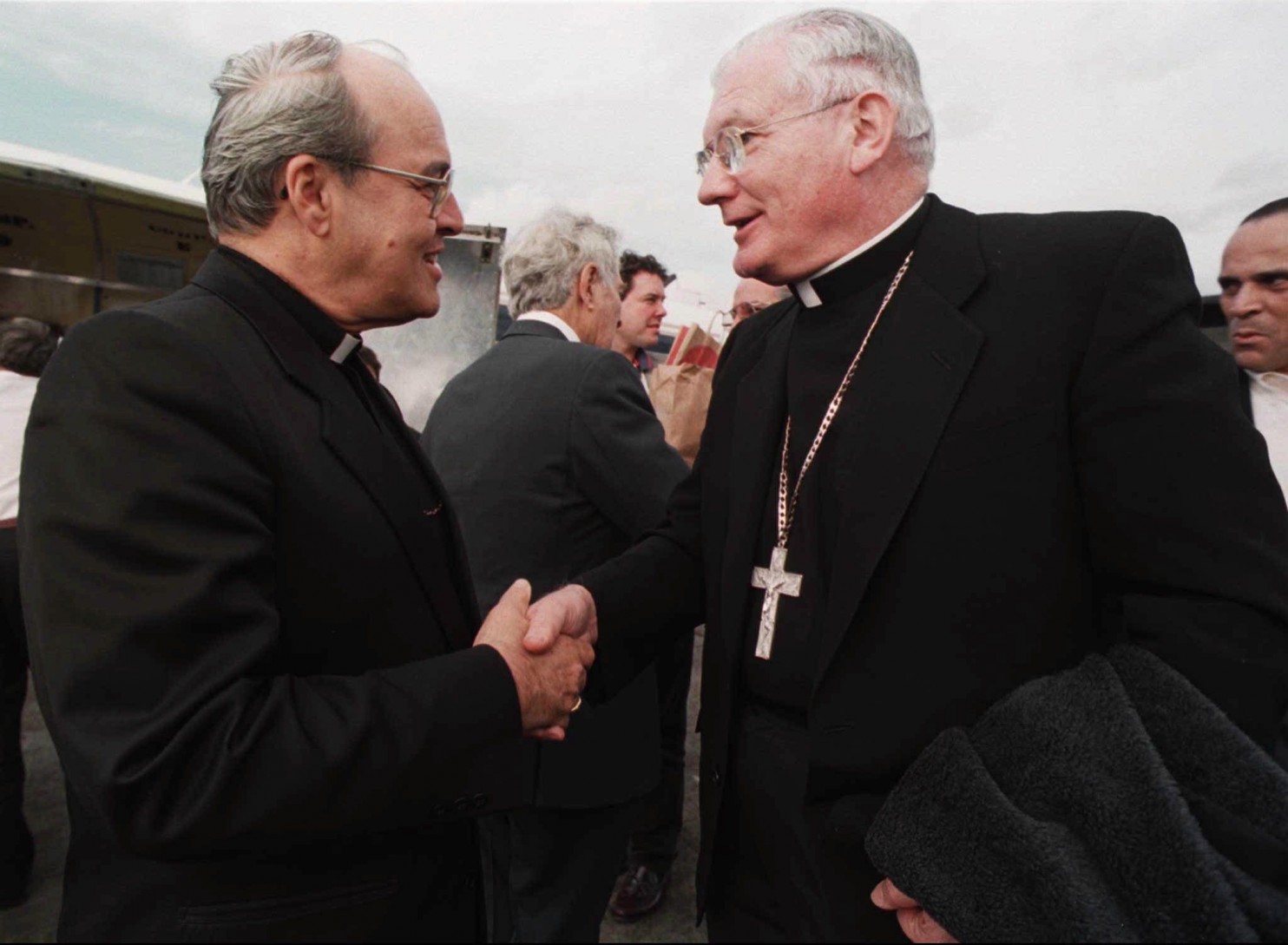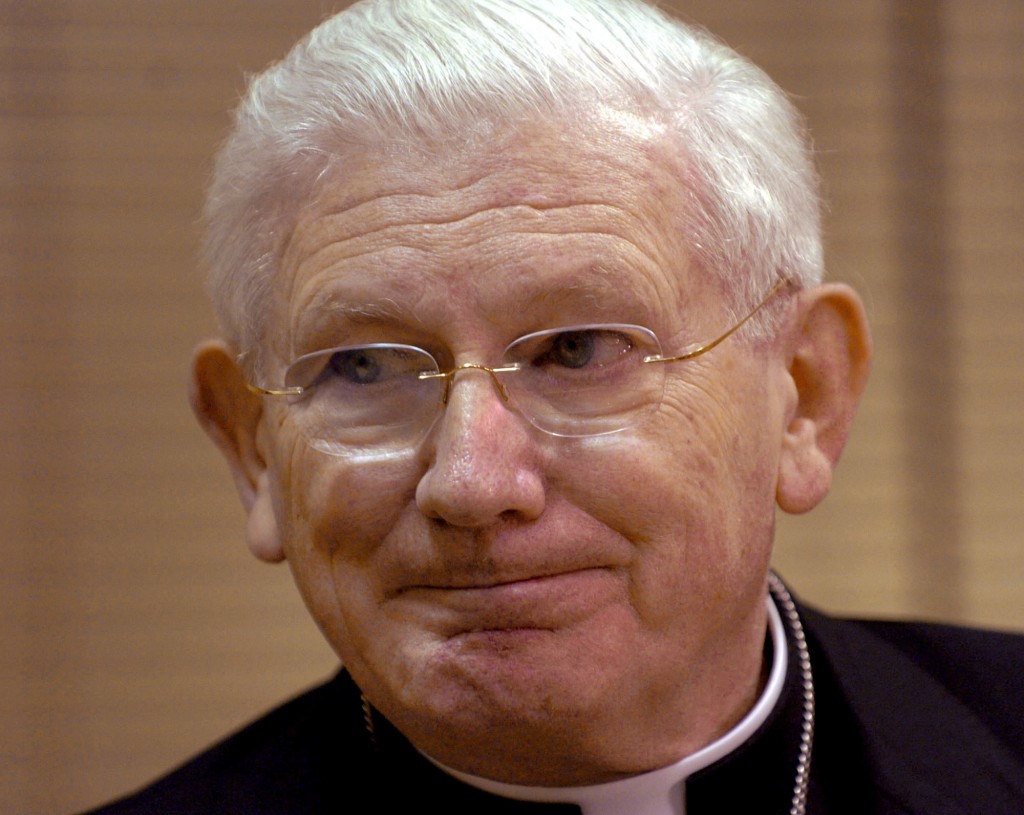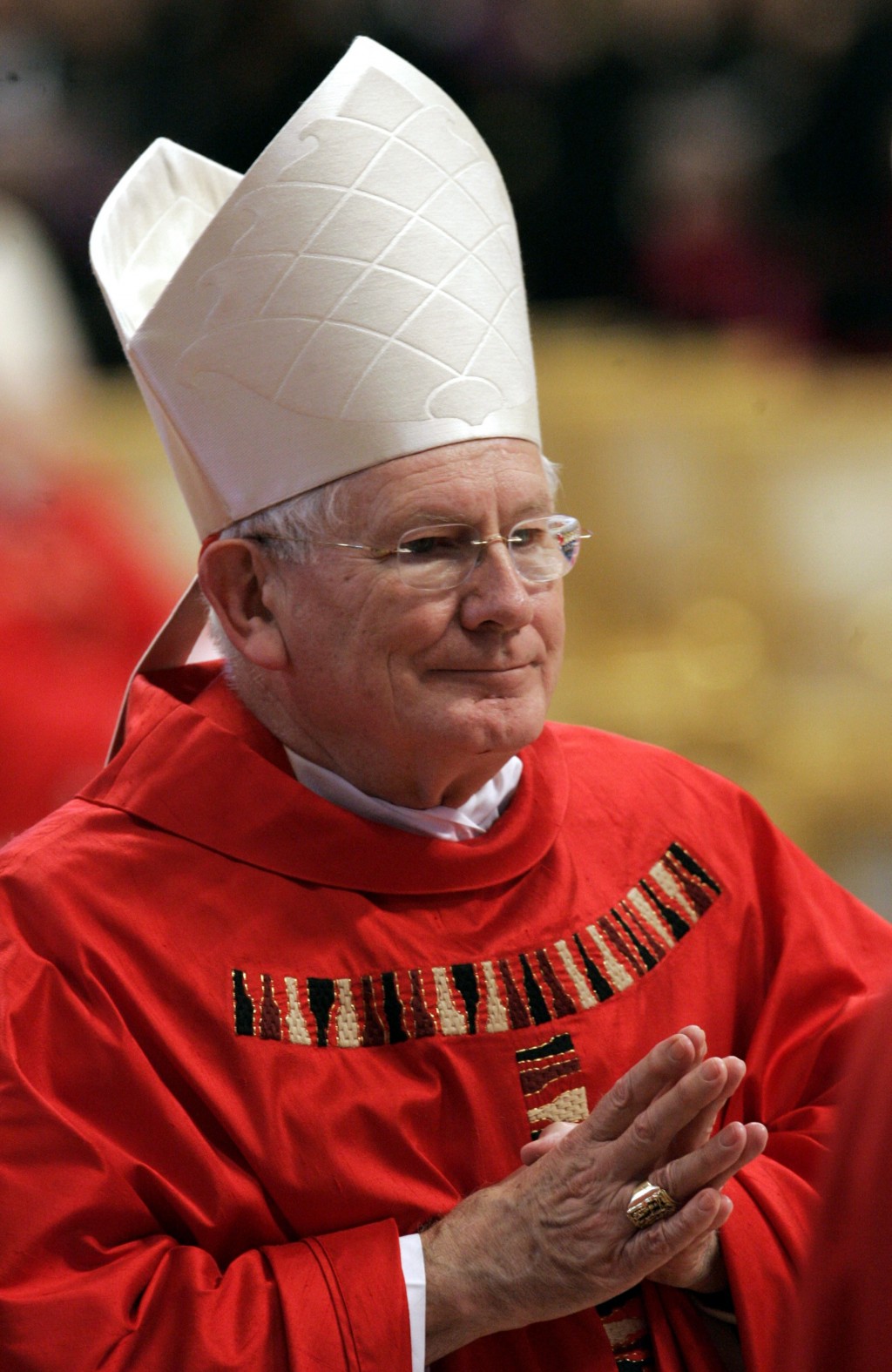William Keeler, Cardinal Who LED Baltimore’s Archdiocese for 18 Years, Dies at 86
By Patricia Sullivan
Cardinal William H. Keeler, who headed Baltimore’s archdiocese for 18 years and took a leading role in making the Catholic Church more responsive to the 2002 sexual-abuse scandal, died March 23 at a home for the aged in Catonsville, Md. He was 86. Archbishop William Lori announced the death. No cause was disclosed. Cardinal Keeler, a conservative leader on matters of faith, gained a reputation for social action and ecumenical diplomacy, creating and improving relationships with Protestant, Jewish and Muslim communities. Late in his career, Cardinal Keeler published the names of hundreds of priests who had been accused of sexual abuse and disclosed that the archdiocese and its insurers had spent more than $5.6 million in 20 years on legal settlements, counseling and other expenses stemming from incidents of child sexual abuse by priests. It was one of the most comprehensive accounts provided by any diocese.
“Ultimately, there is nothing to be gained by secrecy except the avoidance of scandal,” Cardinal Keeler wrote in a letter to 180,000 families registered in the Baltimore Archdiocese, which comprises nine Maryland counties and the city of Baltimore. “And rather than shrinking from this scandal — which, too often, has allowed it to continue — we must address it with humble contrition, righteous anger and public outrage. Telling the truth cannot be wrong.” He supported the decision of the U.S. Conference of Catholic Bishops to remove sexual offenders from any job connected with the church. He was among the cardinals who met with representatives of abuse survivors, and he apologized for his decision in 1993 to return an accused priest to his parish. “One act of abuse is one too many,” he said. “Most often it’s not just one, it’s more than one.” His influence was national and international, even before the sexual-abuse scandal broke. As head of the U.S. bishops’ Committee on Pro-Life Activities, he promoted the church’s positions on the sanctity of human life, and in 2005, he called embryonic stem-cell research “destructive and morally offensive.” He was also part of a national Jewish-Catholic alliance in 1999 to abolish the death penalty. His interfaith efforts were said to have played a role in his elevation to cardinal in 1994. A personable, humble and tireless leader who had a prodigious memory for names, Cardinal Keeler organized and mediated an important session between Pope John Paul II and Jewish leaders in 1987. The pope had received former Austrian president Kurt Waldheim at the Vatican and made him a papal count. Waldheim had been tied to Nazi atrocities in the Balkans during World War II, and Jewish leaders were furious. The cardinal hosted a similar meeting of the pope with Protestant leaders in Columbia, S.C., that year. He also brought American Jewish leaders to meet with Polish Cardinal Jozef Glemp, who had delivered a sermon that many Jews considered anti-Semitic.
A member of a joint Jewish-Catholic commission on the Holocaust, Cardinal Keeler in 1997 said the church must “approach the Holocaust in a spirit of repentance as an evil that so many of the church’s baptized members perpetrated and so many others failed to stop.” His commitment to interfaith dialogue originated in his youth, as a Boy Scout, he said, but it was solidified in 1962, when he was a peritus, or expert consultant, to the Second Vatican Council. One of the last surviving American priests who witnessed the historic council, he was there when Pope Paul VI began mending a 1,000-year-old separation between Orthodoxy and Catholicism. William Henry Keeler was born in San Antonio on March 4, 1931, and grew up in Lebanon, Pa. He graduated from St. Charles Borromeo Seminary in Wynnewood, Pa., studied at the Pontifical Gregorian University in Rome and was ordained in 1955. He received the equivalent of a master’s degree in 1956 and a doctorate in canon law in 1961, both from Gregorian. He was a parish priest in Harrisburg, Pa., from 1955 until 1979, when he became auxiliary bishop of the diocese. Four years later, he was appointed bishop of Harrisburg. In 1989, he was sent to Baltimore as archbishop of the nation’s oldest Catholic diocese, in a state founded as a refuge for Roman Catholics seeking to escape oppression in England. There he oversaw the closing of urban parishes and parochial schools while also raising money for financial aid. He directed the $32 million restoration of the Baltimore Basilica and expanded the area’s largest soup kitchen. He was elected president of the National Conference of Catholic Bishops (a predecessor of the U.S. Conference) in 1992 for a three-year term, a post that made him the church’s chief spokesman in the United States. Just before Pope John Paul II’s visit to Baltimore in 1995, he was elevated to cardinal, a prince of the church and one of the principal advisers to the pope. In addition to hosting the papal visit, he greeted Mother Teresa in 1996 and voted in the election of Pope Benedict XVI a decade later. In October 2006, Cardinal Keeler broke his ankle in a car accident while vacationing in Italy. Another priest was killed, and a third was injured. Eight months later, Cardinal Keeler had surgery to relieve symptoms of hydrocephalus, an abnormal buildup of fluid in his brain, a possible result of the car crash. He had submitted his resignation that spring, as required when a cardinal turns 75, and the Vatican accepted the resignation in July. Archbishop Edwin F. O’Brien was appointed his successor. Lori was installed as archbishop in 2012. Survivors include a sister, Julia Keeler of Toronto.
|
.
Any original material on these pages is copyright © BishopAccountability.org 2004. Reproduce freely with attribution.


